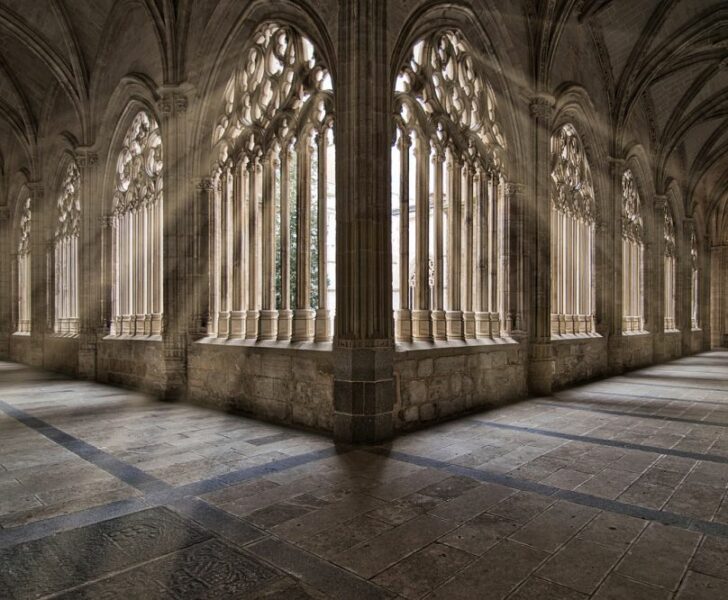Arkitektur Stockholm: En fascinerande blandning av modernitet och historia

Arkitektur Stockholm – En passion för design och innovation
Introduction:

Stockholm, known for its picturesque landscapes, vibrant culture, and rich history, is also renowned for its remarkable architecture. The city seamlessly combines the preserved beauty of its historic buildings with cutting-edge contemporary designs. In this article, we will delve into the world of architecture in Stockholm, exploring its diverse types, popular styles, quantitative aspects, differences between architectural designs, and a historical overview of the advantages and disadvantages of various architectural styles.
En övergripande, grundlig översikt över arkitektur i Stockholm
Stockholm, the capital of Sweden, boasts a multitude of architectural wonders that attract visitors from all around the globe. From medieval structures to futuristic masterpieces, this city is a treasure trove for architectural enthusiasts. The architectural landscape of Stockholm showcases influences from various eras, including medieval, Renaissance, Baroque, Neoclassical, Functionalism, and Modernism, alongside innovative contemporary designs.
En omfattande presentation av arkitektur Stockholm
In Stockholm, architecture is not limited to a single style. Instead, the city offers a diverse range of architectural types that represent different periods and ideologies. These include:
1. Medieval Architecture:
Stockholm’s Old Town, Gamla Stan, is an embodiment of medieval architecture. With its cobblestone streets, narrow alleys, and iconic buildings like the Royal Palace and Stockholm Cathedral, it takes visitors on a journey back in time.
2. Renaissance and Baroque Architecture:
The reign of Gustav Vasa marked the introduction of Renaissance and Baroque influences in Stockholm. The Riddarholmen Church and The House of Nobility exemplify this architectural style, characterized by ornate decorations and grandeur.
3. Neoclassical Architecture:
By the late 18th century, Stockholm experienced a Neoclassical wave, inspired by ancient Greece and Rome. Structures like the Royal Swedish Opera and The National Museum exemplify this style, with their symmetrical designs, columns, and domes.
4. Functionalism:
The early 20th century witnessed the rise of Functionalism, a movement focused on practicality and simplicity in design. Architects such as Gunnar Asplund and Sigurd Lewerentz introduced this style in buildings like the Stockholm Public Library and Skogskyrkogården, a UNESCO World Heritage site.
5. Modernism:
Stockholm embraced Modernism in the mid-20th century, showcasing clean lines, large windows, and open spaces. The iconic Stockholm City Hall, designed by Ragnar Östberg, is a prime example of this bold architectural movement.
These architectural types contribute to Stockholm’s distinct skyline, attracting both locals and tourists alike.
Kvantitativa mätningar om arkitektur Stockholm
Quantifying the architectural magnificence of Stockholm provides valuable insights into the city’s grandeur. As of 2020, Stockholm is home to approximately 1.6 million inhabitants and more than 200,000 registered buildings. Among these, architectural experts estimate that around 8,000 buildings hold cultural or historical significance, further highlighting the city’s rich architectural heritage.
Additionally, Stockholm hosts numerous architectural events and exhibitions, drawing attention to the city’s commitment to promoting architectural excellence. The Stockholm Architecture Biennale, held every other year, showcases innovative designs, sustainable solutions, and architectural discussions, inspiring both professionals and the general public.
En diskussion om hur olika arkitektur i Stockholm skiljer sig från varandra
The architectural diversity in Stockholm stems from the city’s historical evolution and the influence of different architectural movements. Each style represents the values, ideologies, and advancements of its respective era.
From the Gothic structures of the Middle Ages to the futuristic designs of contemporary buildings, Stockholm’s architectural landscape offers a fascinating contrast. The mixture of older buildings, carefully preserved and restored, alongside modern constructions, creates a harmonious blend that encapsulates the essence of Stockholm’s architectural charm.
En historisk genomgång av för- och nackdelar med olika arkitektur i Stockholm
Throughout Stockholm’s architectural journey, various styles have presented both advantages and disadvantages. The historic buildings, such as those found in Gamla Stan, provide a nostalgic charm and a glimpse into the city’s past. However, they often pose challenges in terms of modern functionality and efficient use of space.
On the other hand, contemporary designs emphasize functionality and sustainability, incorporating environmentally friendly materials and energy-efficient solutions. These modern buildings are often admired for their innovative designs and ability to adapt to evolving needs. However, some critics argue that the rapid pace of modern construction may lead to a loss of historical identity and disrupt the visual harmony of the city.
In conclusion, Stockholm’s architecture encompasses a wide spectrum of styles, reflecting the city’s rich history, progress, and commitment to creating harmonious spaces. From its medieval core to the forefront of modern innovation, Stockholm stands as a testament to the seamless integration of past and present in architectural design.
: Insert engaging video showcasing the stunning architecture of Stockholm, highlighting the historical buildings, landmarks, and modern designs.]
Through its breathtaking architecture, Stockholm not only captivates the eyes but also tells a powerful story of the city’s evolution, cultural values, and commitment to excellence.











